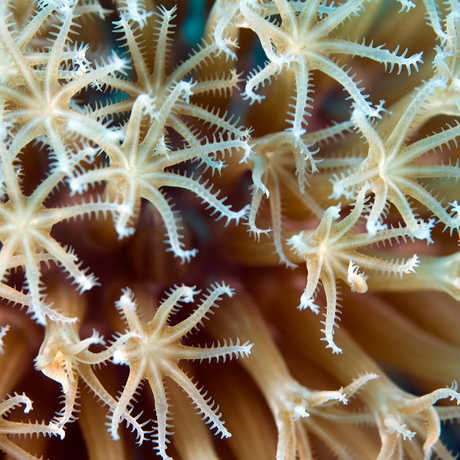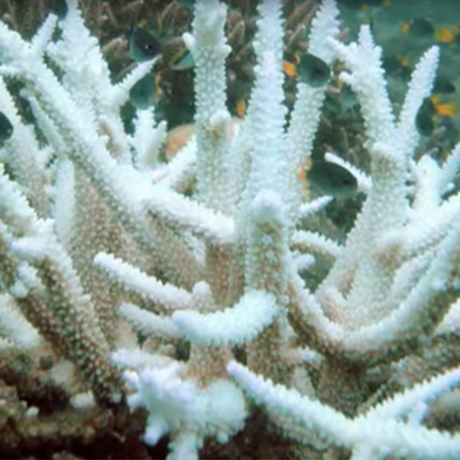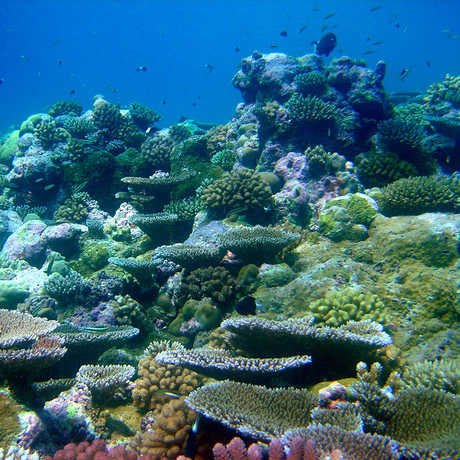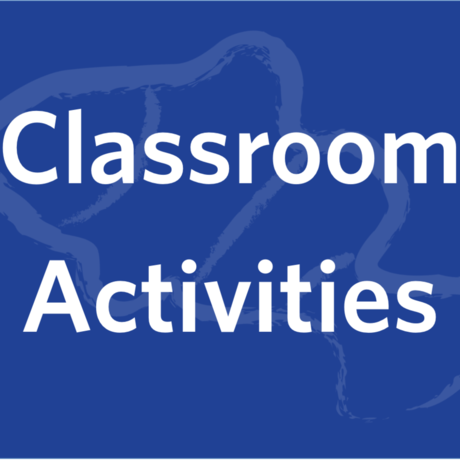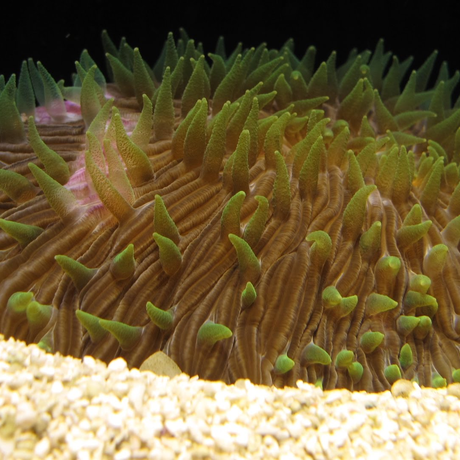Preview our films and find information on licensing them for showings in your venue.
Embark on a journey into the hidden world of coral reefs in this HD film exploring some of our planet’s most biodiverse—and critically threatened—ecosystems.
About the Film
Duration: 26 minutes
Grade Level: Film appropriate for all ages; content connects to NGSS standards for grades 5 and above
Dive into the heart of the Academy’s iconic Philippine coral reef tank as thousands of tropical fish flutter by. Travel the globe to explore coral reefs teeming with life and learn how scientists are racing to develop sustainable solutions to protect these vitally important ecosystems for the future. Along the way, discover how corals live, breathe, and reproduce, supporting a quarter of all marine life on Earth and providing critical benefits to human communities in our ever-changing world.
Teacher Tip: You can click the Settings cog in the YouTube footer to adjust the Quality to up to 1080HD, and you can also toggle on Full Screen.
Videos and Lessons for Your Classroom
In addition to gaining access to stream the entire HD film for your students, educators will be able to browse a selection of science-rich materials designed specifically for classrooms and informal learning environments, including short video clips featuring remarkably realistic visualizations of a living reef and suggestions for activities to accompany the media.
What Animals Live in a Coral Reef?
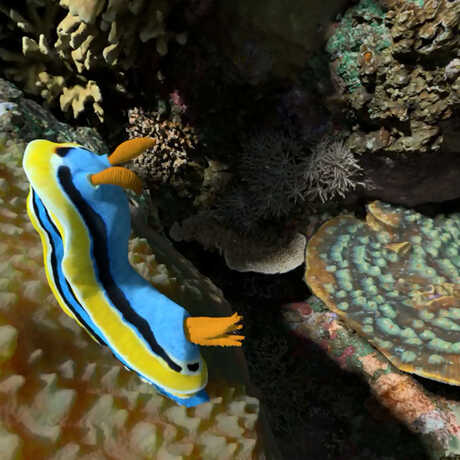
Duration: 2.5 minutes
Dive underwater to meet some of the many creatures that inhabit a coral reef. Hidden in nooks and crannies, we find a multitude of organisms, in a complex web of connections.
Why does the moray eel appreciate the cleaner shrimp and the cleaner wrasse? How does the trapezia crab defends its home? What does a nudibranch—a brightly-colored sea slug—eat?
Is a Coral a Predator, a Producer, or Both?
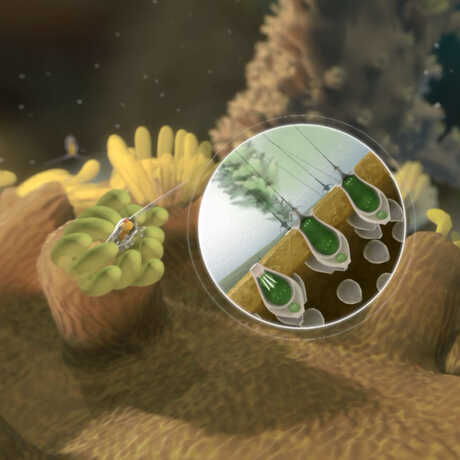
Duration: 3 minutes
Shrink to the size of a coral polyp to see how corals acquire energy. Like all animals, coral polyps eat. They capture prey using microscopic hooks released from their tentacles. But most of the coral's energy comes from algae known as zooxanthellae which reside in the polyp's tissue, converting sunlight into energy-rich sugars that corals can absorb for fuel.
So would you describe a coral as predator, prey, or both?
How Do Corals Build Reefs?
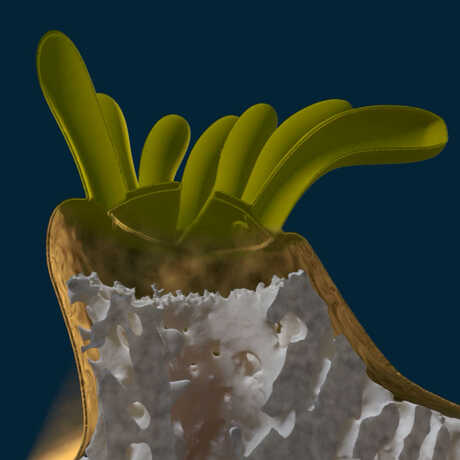
Duration: 2.5 minutes
Let's look inside a polyp to see how it helps build a reef. It takes carbon from algae and seawater, turns it into calcium carbonate, and uses this chalky substance to build an internal skeleton.
This visualization showing the interior of the polyp during the skeleton-building process will change your understanding of how hard corals construct entire reefs!
How Do Scientist Divers Explore the Twilight Zone?
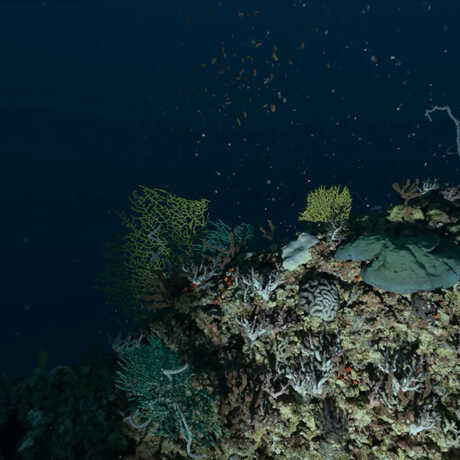
Duration: 2 minutes
Scientist explorers study deep reefs in a region nicknamed the Twilight Zone. Unlike shallow reefs, corals here survive without light. Some species appear fluorescent at depth, which helps their embedded algae photosynthesize.
Plunge into the darkness with several scuba divers as they shine a light on sticky jellies, exploring ecosystems that few will ever experience in real life.
How Do Humans Depend on Coral Reefs?

Duration: 3 minutes
Humanity is connected to our oceans. Half a billion people rely on coral reefs for food and income. But reefs provide more than food. They also provide protection. Healthy reefs protect land from the damaging effects of tropical storms, shielding the shoreline from waves.
Worldwide, reefs protect hundreds of millions of people living in coastal communities.
Why Do Corals Bleach?
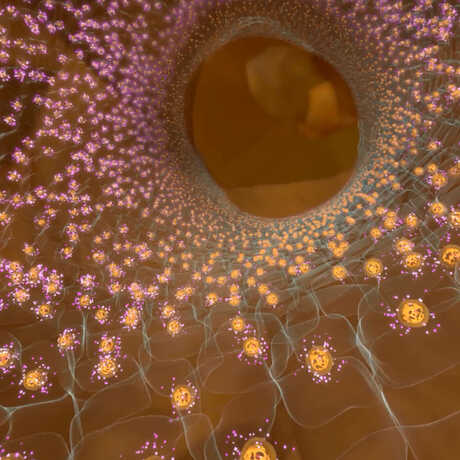
Duration: 3 minutes
Shallow reefs are particularly sensitive to increasing temperatures. Warming water can cause coral bleaching, when an entire colony of coral polyps loses its color. In this clip, you'll visit the interior of an individual polyp to see how this happens.
Bleached corals are sick, but not dead. Bleached reefs can recover, which is why it's imperative we slow the pace of rising ocean temperatures.
Connections to the Next Generation Science Standards
Crosscutting Concepts
Consider using one of the below as a lens through which to explore content featured in the full film. Remember that this will affect the specific learning outcome for your students; don't aim to use all three!
- Energy and Matter
- Cause and Effect
- Structure and Function
- Stability and Change
Disciplinary Core Ideas
Depending on your grade level and subject matter, your expected use of the full film will undoubtedly differ from other K-12 teachers. Here we list the scientific ideas that are present in Expedition Reef. Considering focusing on one or more.
Grade 5
- 5-LS2-1 How does matter and energy cycle through coral reef ecosystems?
- 5-ESS2-1 Do you think coral reefs are a part of the geosphere or the hydrosphere, and why? How do coral reefs as solid structures influence the living system or landform shape around them?
- 5-ESS3-1 How do individual communities use science ideas to protect the Earth’s resources and environment?
Middle School
- MS-LS1-6 What evidence from coral reef ecosystems showcases the role of photosynthesis in the cycling of matter and flow of energy into and out of organisms?
- MS-LS2-3 Considering the relationship between coral cells and zooxanthellae, how can you explain the pattern of interaction among these organisms? How do matter and energy move through a coral reef ecosystem, or through the system of a single coral reef animal?
- MS-ESS-2 How do coral reefs mitigate the effects of coastal flooding, a natural hazard?
- MS-LS2-4 How does ocean acidification affect populations within the coral reef ecosystem?
- MS-LS2-5 Which design solution for saving the coral reefs will best maintain biodiversity and ecosystem services?
High School
- HS-ESS-1 What evidence do you have for how coral reefs influence human activity? Speak to natural resources, the occurrence of natural hazards, and changes in climate.
- HS-ESS2-2 How do Earth’s surface processes and human activities affect each other? How does one change to Earth’s surface create feedback that causes changes to other Earth systems?
Recommended Reading
The following immersive, long-form articles from bioGraphic feature stunning imagery and video weaved within a compelling, timely narrative.
Spawning an Intervention
To help corals survive the myriad threats they currently face, an international team of scientists is mastering the art and science of raising coral babies.
An Audacious Plan in the Twilight Zone
A team of deep-reef explorers attempts to surface the unknown biodiversity of Vanuatu’s twilight zone.
A Cure for Coral Reefs
Scientists hope that dosing damaged corals with probiotics could fortify reefs against pollution, disease, and climate change.
Farm to Reef
Cuba’s sustainable farming practices could provide a recipe for restoring struggling coral reefs around the world.
Lens of Time: Growing Against the Odds
As reefs endure another onslaught, scientists are taking a closer look at how corals live and grow—and what may enable some of them to persist in a changing world.
